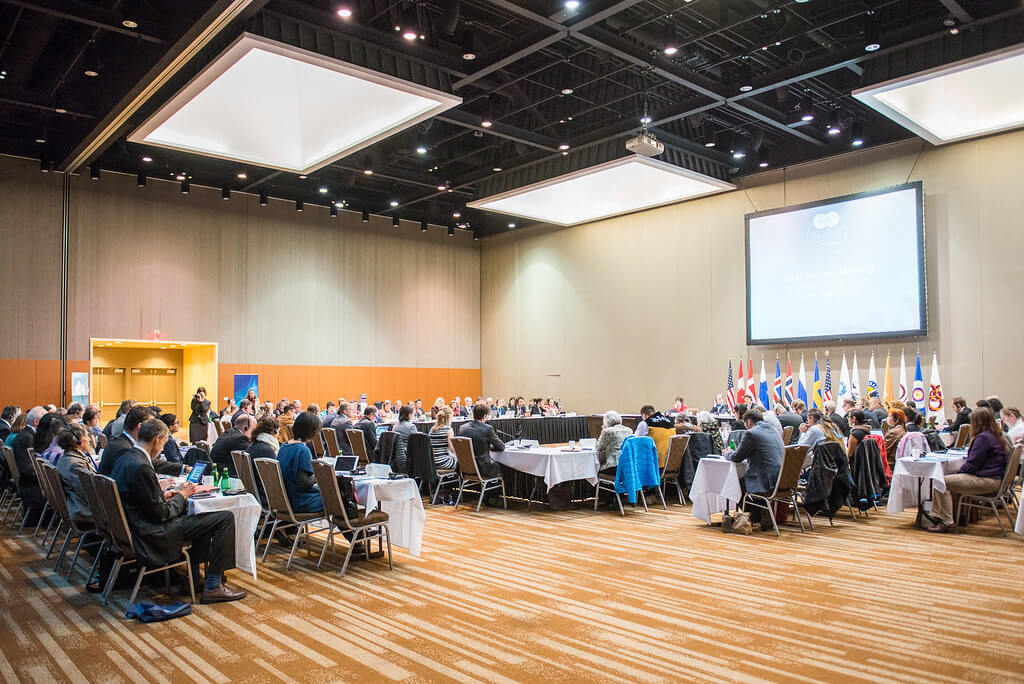
What would you do if awful weather risked preventing your conference from going ahead? Smartella was hugely proud to power a blended learning experience which helped a client to deliver crucial training from a conference in London to delegates who were unable to attend due to awful weather conditions.
A Blended Learning Case Study - The Problem
Last March all was calm, and then a hideous snow storm engulfed the UK. Flights were grounded. Trains stopped. Traffic came to a standstill as the whole country retreated to wherever the nearest kettle was. You were probably stuck in a nightmare traffic jam on the way home from work. Greggs van drivers started giving their snacks out in the middle of these jams. We hope that you were sat behind one.
Unfortunately, these adverse weather conditions brought severe disruption to many businesses including our client, a leading training provider.
They were scheduled to host a fully-booked and much anticipated leadership seminar to some of the world’s most important executives, on the weekend where the weather reached its worst. Some executives had flown from as far as Dubai to attend. Others had discovered that their flights had been cancelled at the last minute. Likewise, while some of the lecturers had made it to London, the snow had made London inaccessible for others. If our client had cancelled the seminar, they would have suffered financial losses of at least £25,000 that weekend, not to mention considerable reputational damage. Our client desperately needed a way to bring all delegates and lecturers together so that they could conduct the seminar as normal, in spite of the snow.


Our Solution
How were we going to dig the client out of this avalanche of snow? Our solution was to transform their traditional seminar model into an immersive blended learning experience. Firstly we created a live stream of the seminar in London, enabling our client to provide training to those delegates who had already arrived in the UK ahead of the seminar. Then we linked delegates around the world to the lecture through our unique virtual classroom.
This allowed all the delegates to appear simultaneously on the same screen on each other’s computer screens, as well as on screen in the live seminar via a projector. Delegates were also able to share notes live with everybody else in the seminar and had access to a vast suite of digital learning resources. That way everybody was able to learn together, just as if they had all made it to London.
Making Every Detail Perfect
One logistical issue remained. It was essential to enable the lecturers who couldn’t make it to the seminar to enrich the group’s learning experience with their insights. Fortunately for them and their delegates, they were able to join the live stream and share their knowledge remotely with all of the delegates, no matter where they were based. We hope that the lecturers spared their learners from cheesy one-liners, given the effort that we’d gone to.


The Results
This combination of virtual learning and traditional class-based tuition was met with huge appreciation by everyone involved. Time spent on long flights from abroad was not wasted, and opportunities to gain crucial understanding about the finer points of leadership were not denied to delegates because of the weather. Most importantly, all of the delegates gave great feedback to our client.
The Benefits
This is just one example of how blended learning boosts businesses. Another significant advantage of this learning style is the ‘flipped classroom (or flipped training room, as it were)’ model at its core.
Traditionally, learning involved delegates attending a session where they would be introduced to various concepts, before being given assignments to complete in their own time in between sessions. Blended learning quite literally ‘flips’ this model by giving delegates access to resources online before a seminar, allowing them to introduce themselves to the material before a session begins. Sessions then take the form of group work, debates, and discussions guided by a lecturer, instead of the traditional format of lecturers explaining and often dictating a series of notes, of with the aid of a board.
The ‘flipped classroom’ means that blended learning is focused around the needs of the learner, rather than the presentation style of the lecturer. This learning style is particularly useful for senior corporate executives as they often only have a very limited amount of time available to engage in a course. Blended learning ensures that as soon as they are ready, they will be able to absorb all of the information they need to gain the knowledge and training required, before honing their understanding through peer discussion from anywhere in the world.


CTA
To give your learners the tools they need to succeed from any location, please get in touch with us today. Let’s move knowledge forwards together.



